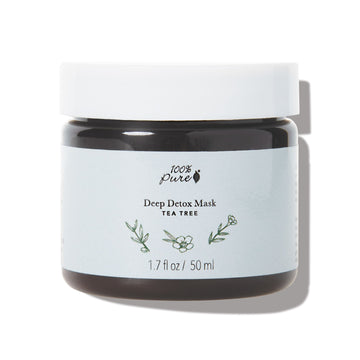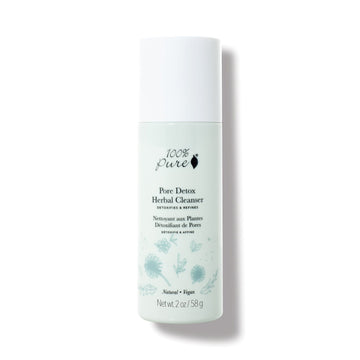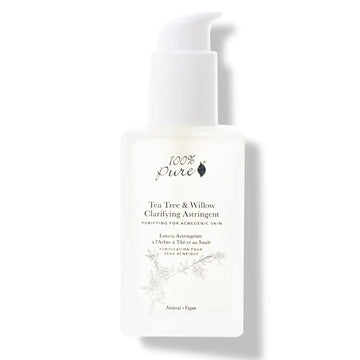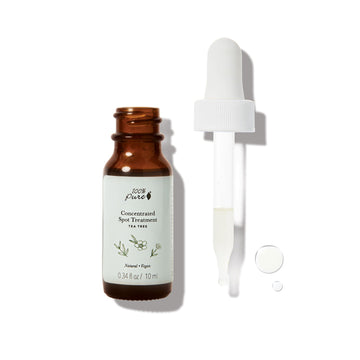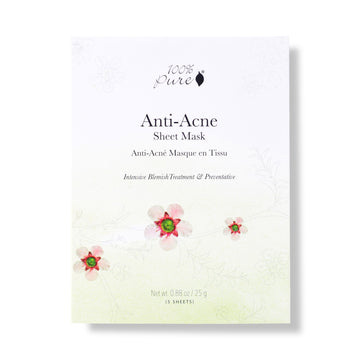Understanding the impact of certain skincare ingredients on acne and making informed choices.
Written by: 100% PURE®
Acne, a common skin condition, affects millions of people worldwide. It is characterized by the presence of pimples, blackheads, and whiteheads. Identifying the causes and triggers of acne is crucial for effectively managing and treating the condition. For individuals with acne-prone skin, being knowledgeable about skincare ingredients becomes even more important. By learning about the ingredients commonly found in skincare products and their potential impact on acne, individuals can make informed choices and minimize the risk of exacerbating their skin concerns.
Acne is a multifactorial skin condition that occurs when hair follicles become clogged with oil, dead skin cells, and bacteria. Several factors contribute to the development of acne, including hormonal fluctuations, excessive sebum production, hyperkeratinization (abnormal shedding of skin cells), and the proliferation of acne-causing bacteria called Propionibacterium acnes.
Acne can manifest in various forms, each with distinct characteristics. Comedones are non-inflammatory acne lesions characterized by clogged pores. When the pore is partially blocked, a blackhead (open comedones) forms, while a whitehead (closed comedones) occurs when the pore is fully blocked.
Inflammatory acne involves the presence of red, swollen, and sometimes painful lesions. Papules are small, raised bumps, while pustules are similar in appearance but contain pus. Nodules are larger, deeper, and more severe lesions that develop beneath the skin's surface. Cysts are the most severe form of acne and are characterized by painful, fluid-filled lumps.
Various treatments are available to manage and control acne. Topical treatments such as benzoyl peroxide, salicylic acid, and retinoids are commonly used to unclog pores, reduce inflammation, and promote skin cell turnover. Oral medications like antibiotics, hormonal therapies, and isotretinoin may be prescribed for more severe or persistent cases. Additionally, dermatological procedures like chemical peels, laser therapy, and extractions can be effective in treating acne and minimizing scarring.
Skincare plays a crucial role in managing acne, as the products we use can either help improve the condition or potentially exacerbate it. Understanding the impact of skincare products on acne and being aware of the ingredients they contain is essential for individuals seeking effective acne management.
Skincare products can help in several ways. Firstly, using gentle cleansers can help remove excess oil, dirt, and impurities from the skin without stripping it of its natural moisture. Look for non-comedogenic cleansers that won't clog pores and potentially worsen acne.
The choice of moisturizers is also important. Opt for lightweight, oil-free, and non-comedogenic moisturizers that provide hydration without adding excess oil to the skin. Moisturizing helps maintain the skin's barrier function, preventing excessive dryness and potential overproduction of sebum, which can contribute to acne development.
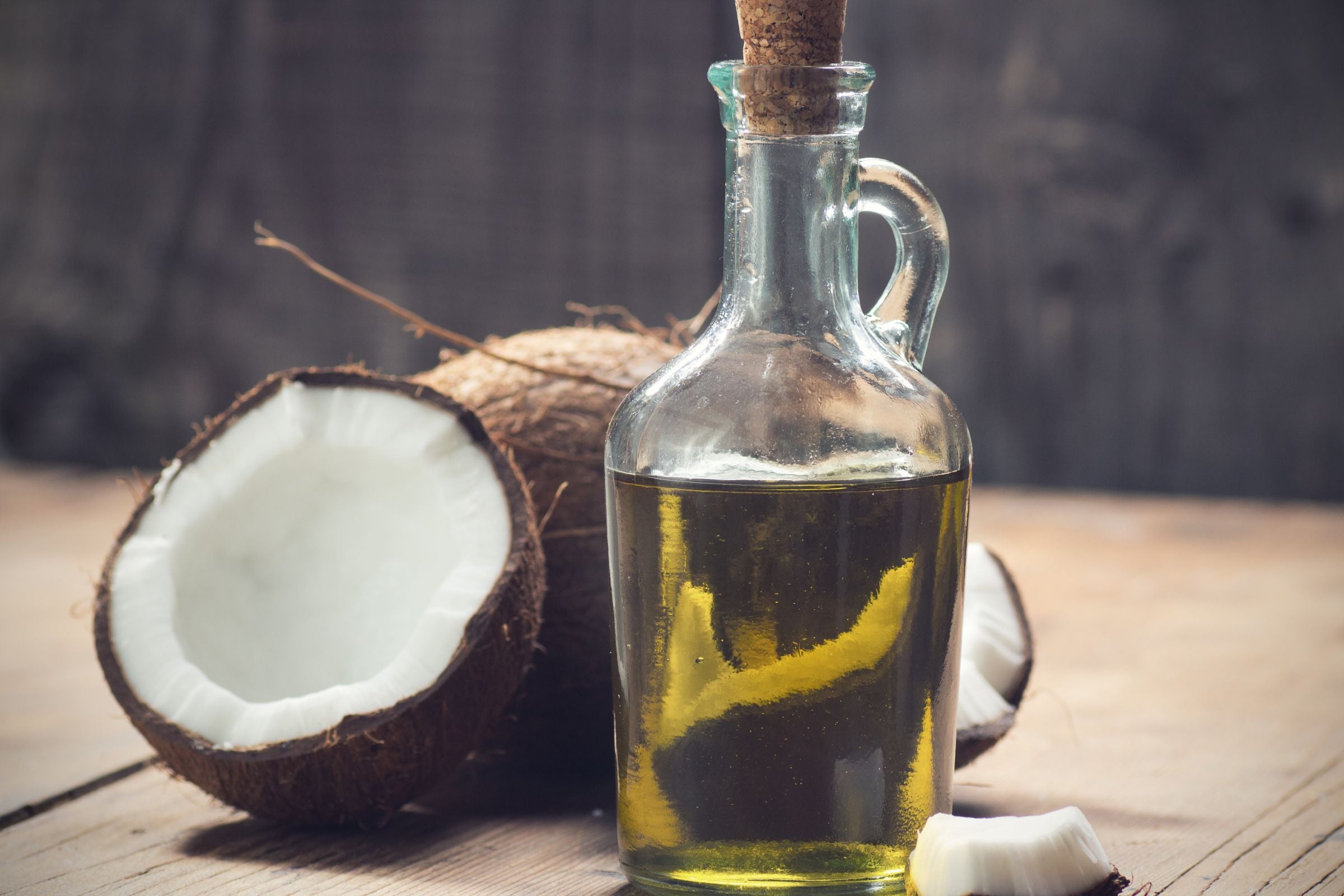
Alcohol
Alcohol is often used in skincare products due to its ability to act as a solvent and provide a quick-drying effect. It can also serve as a preservative and provide a cooling sensation.
Alcohol can strip the skin of its natural oils, leading to dryness and irritation. This can disrupt the skin's barrier function and trigger an overproduction of sebum, potentially leading to clogged pores and acne breakouts.
Coconut oil
Coconut oil is a popular ingredient in skincare products due to its moisturizing properties. It is rich in fatty acids and can help hydrate and soften the skin.
It is highly comedogenic, meaning it has a high likelihood of clogging pores. This can trap bacteria, dead skin cells, and sebum, leading to the formation of acne lesions and breakouts, particularly in individuals with oily or acne-prone skin.
Fragrance
Fragrances are added to skincare products to enhance the sensory experience and create pleasant scents.
However, it can contain a mix of ingredients that may irritate the skin and trigger inflammation. This can worsen acne in individuals with sensitive or acne-prone skin, leading to redness, swelling, and breakouts. Opting for fragrance-free products is advisable for those with acne concerns.
Sodium Lauryl Sulfate (SLS)
Sodium Lauryl Sulfate (SLS) is a surfactant commonly used in skincare and cleansing products. It helps create lather and remove dirt, oil, and impurities from the skin.
It can be harsh on the skin, especially for individuals with sensitive or acne-prone skin. It can disrupt the skin's natural moisture balance, leading to dryness, irritation, and potential inflammation, which may aggravate acne symptoms.
Silicones
Silicones are often used in skin care products as they can create a smooth, silky texture and provide a protective barrier on the skin's surface. They can help fill in fine lines, control oiliness, and create a matte finish.
While not inherently comedogenic, silicones can create a film on the skin that may trap impurities, bacteria, and sweat, potentially leading to clogged pores and acne breakouts. Individuals with acne-prone skin should be cautious when using products high in silicones and consider opting for non-comedogenic alternatives.
Non-comedogenic products are crucial for acne-prone skin because they are formulated to minimize pore-clogging and reduce the risk of acne breakouts. Non-comedogenic products are designed to be lightweight, oil-free, and allow the skin to breathe. They typically avoid ingredients known to clog pores, such as certain oils, heavy waxes, and emollients. The best way to get rid of acne is to use products from reputed brands like 100% Pure which are known for using clean ingredients.
Here are the 100% Pure products you can add to your skincare routine to eliminate the acne from your skin:
Tea Tree Deep Detox Mask: This deep detox mask harnesses the power of tea tree oil, charcoal, and bentonite clay to draw out impurities, absorb excess oil, and unclog pores. It helps reduce the appearance of acne and promotes a clearer complexion when used regularly.
Pore Detox Herbal Cleanser: This cleanser contains neem and dandelion root, which provide antimicrobial and exfoliating benefits, respectively. It helps remove impurities without stripping the skin.
Tea Tree and Willow Clarifying Astringent: This clarifying astringent is a valuable addition to your acne-prone skincare routine. It is formulated with tea tree oil, willow bark, and witch hazel to provide a potent combination of antimicrobial, exfoliating, and pore-tightening properties.
Tea Tree Concentrated Spot Treatment: Tea tree is a powerhouse ingredient when it comes to abolishing acne. It regulates sebum production, reduces redness, and improves the overall appearance of acne-prone skin. This spot treatment also includes witch hazel and peppermint essential oil for hydration.
Anti Acne Sheet Mask: This sheet mask is infused with ingredients like tea tree, willow bark, and niacinamide to target acne, calm inflammation, and balance sebum production. This sheet mask provides a concentrated treatment to help soothe and improve the condition of acne-prone skin.
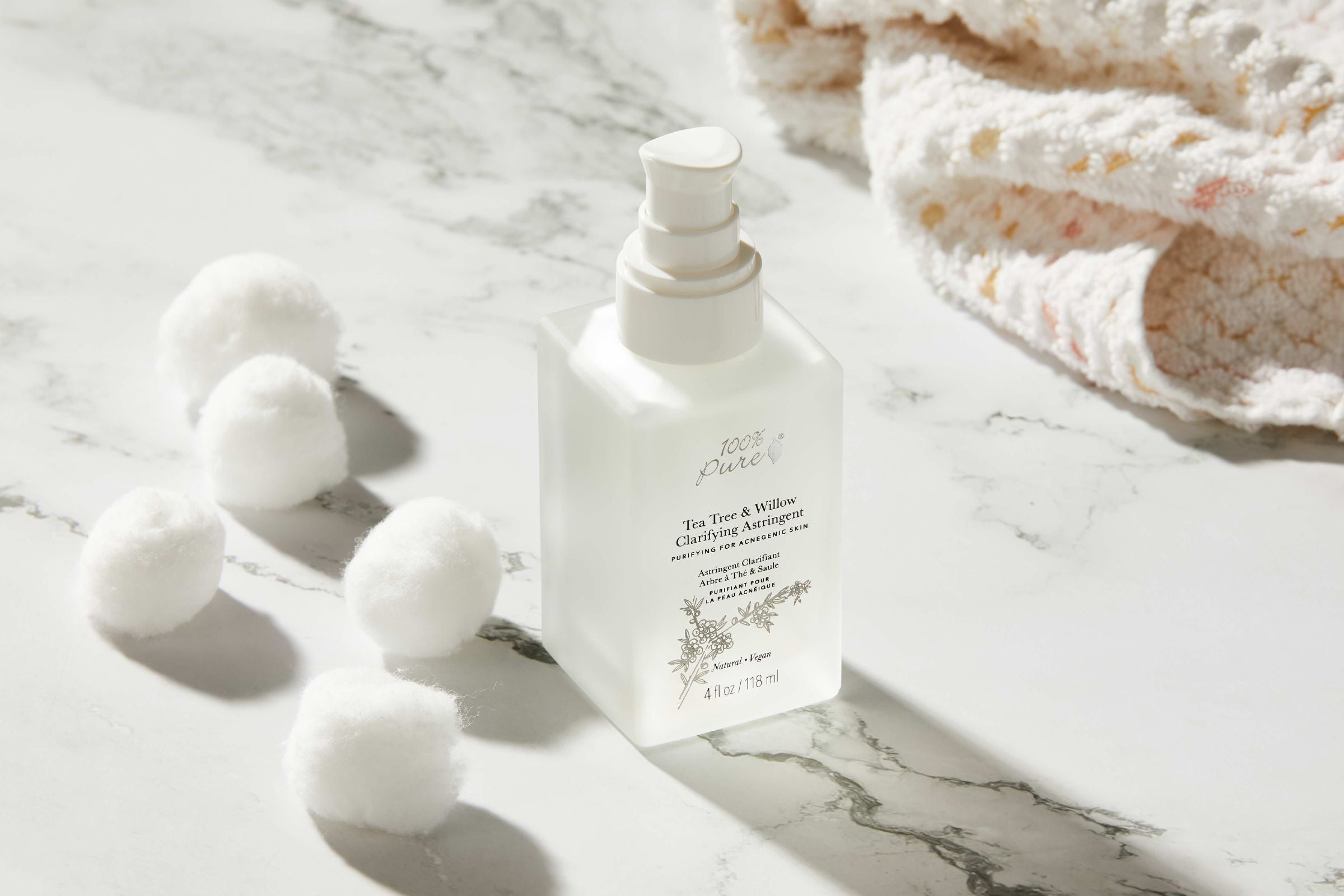
How can I determine if a product is non-comedogenic?
To determine if a product is non-comedogenic, first look for "non-comedogenic" labeling on the packaging. While not regulated, it indicates the product is less likely to clog pores. Secondly, check the ingredient list for known comedogenic substances.
What should I do if a product exacerbates my acne?
If a product inflames your acne, there are a few steps you can take. First, discontinue the use of the product immediately. Next, revert to your previous skincare routine to allow your skin to recover. If necessary, consult a dermatologist who can provide personalized guidance and recommend alternative products suitable for your skin type.
Can a product cause breakouts even if it doesn't contain these ingredients?
Yes, a product can cause breakouts even if it doesn't contain known comedogenic ingredients. While certain substances are more likely to clog pores, everyone's skin is unique and may react differently to various ingredients.
How long should I test a product before deciding it's causing breakouts?
The timeframe for testing a product to determine if it's causing breakouts can vary. It's recommended to test a new product for at least 2-4 weeks, as this allows sufficient time for your skin to adjust and for any potential reactions to show.
Understanding the role of skin care in acne management is vital for achieving more transparent, healthier skin. By incorporating beneficial ingredients like tea tree oil, salicylic acid, and witch hazel, you can effectively combat acne. Remember to closely examine product labels, familiarize yourself with comedogenic ingredients, and tailor your skincare routine accordingly. Stay patient and consistent, in the end, it will be all worth it when you’ll see your skin looking extremely radiant and glowing.
- Tags: July-2023
We carefully hand-select products based on strict purity standards, and only recommend products we feel meet this criteria. 100% PURE™ may earn a small commission for products purchased through affiliate links.
The information in this article is for educational use, and not intended to substitute professional medical advice, diagnosis, or treatment and should not be used as such.


